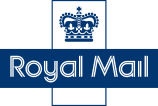Our philosophy
So, what’s our thinking?
The central task of leadership
Success and failure of organisations rests on their ability to find solutions to a variety of problems. How can we give our customers what they need? How can we consistently deliver on our promises? How can we attract and keep the best people to meet our business goals, both now and in the future? How can we innovate and adapt fast enough to survive? Creating the capability and agility to meet these challenges is, in our view, the central task of leadership.
It’s not about the hero
We recognise that the challenges an organisation faces cannot be tackled by one individual alone, however skilful and experienced they may be, and however closely they fit some notion of the ‘ideal’ profile. In fact, our research shows that it is practically impossible for any individual leader to be highly effective in all aspects of leadership.
Context matters for leadership
We also recognise that ‘one size’ does not fit all. We know that highly effective leaders come in a wide variety of shapes and sizes. Our research suggests that this has a lot to do with the different contexts that leaders are exposed to. Behaviours that might be well regarded and successful in one industry or organisation may not be helpful in another, or even from one department or team to another.
Incomplete leaders, complete teams
In this way, we therefore approach the development of leaders and leadership teams from the conviction that individual leaders are necessarily ‘incomplete’. As a consequence, building ‘complete’ leadership involves creating teams of incomplete leaders who complement one another, providing different strengths to plug the gaps that each incomplete individual creates, and are able to work effectively together, passing the ‘baton’ of leadership as the demands of the situation change.
Teams are the hard part!
But it’s not enough to have the right mix of individuals in a team. In fact, working in a team of people who have different styles to you can be very challenging and can create unhelpful dynamics, which negatively impact on performance and people’s wellbeing. That’s why organisations need to help their teams to work together in such a way that enables all members to bring their unique strengths together at the right moment, at the right time. When truly complementary, complete teams of leaders work together and with other teams in effective ways, organisations can adapt, grow and ultimately thrive.
Edgecumbe’s Primary Colours® Leadership Model
Taught at Oxford University’s Saïd Business School and adopted by some of the world’s leading organisations, including Rolls-Royce, ICA Gruppen and BSI, our leadership model allows us to measure and develop personality, behaviour and impact at individual, team and organisational levels.






